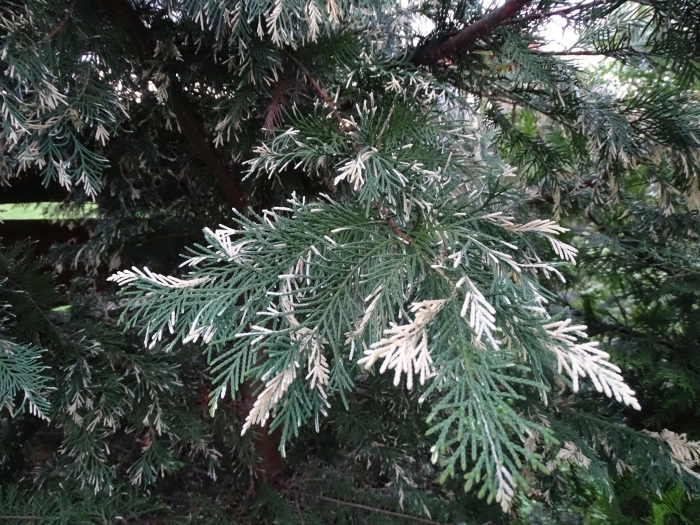Leyland Cypress
(×Hesperotropsis leylandii)
Leyland Cypress (×Hesperotropsis leylandii)
/
/

© Grzegorz Grzejszczak
CC BY-SA 4.0
Image By:
© Grzegorz Grzejszczak
Recorded By:
Copyright:
CC BY-SA 4.0
Copyright Notice:
Photo by: © Grzegorz Grzejszczak | License Type: CC BY-SA 4.0 | License URL: http://creativecommons.org/licenses/by-sa/4.0/ | Uploader: grzegorz_grzejszczak | Publisher: iNaturalist |
















Estimated Native Range
Summary
×Hesperotropsis leylandii, commonly known as Leyland cypress, is a fast-growing coniferous evergreen tree, a hybrid between Monterey cypress (Cupressus macrocarpa) and Nootka cypress (Callitropsis nootkatensis). It thrives in a variety of settings, including open woodlands and urban environments. Typically, it can reach heights of up to 49 feet within 16 years, with a rapid growth rate that makes it a favorite for creating privacy screens and hedges. The Leyland cypress has a dense, pyramidal shape with foliage ranging from dark green to bluish-green, and while it does not produce cones often, when it does, they are small and inconspicuous.
This tree is valued for its ability to establish a quick visual barrier and is often used in windbreaks. It is adaptable to a range of soil types, from clay to loam to sandy soils, as long as they are well-drained. Leyland cypress prefers full sun but can tolerate light shade. It is also resistant to salt spray and urban pollution, making it suitable for coastal and roadside plantings. ’Gold Rider’ is a notable cultivar with yellow-green foliage that has received the Royal Horticultural Society’s Award of Garden Merit. However, Leyland cypress can suffer from canker diseases, especially in hot climates, and its shallow root system may lead to instability in storms or high winds. It is also important to space these trees properly to avoid overcrowding and increased disease susceptibility.CC BY-SA 4.0
This tree is valued for its ability to establish a quick visual barrier and is often used in windbreaks. It is adaptable to a range of soil types, from clay to loam to sandy soils, as long as they are well-drained. Leyland cypress prefers full sun but can tolerate light shade. It is also resistant to salt spray and urban pollution, making it suitable for coastal and roadside plantings. ’Gold Rider’ is a notable cultivar with yellow-green foliage that has received the Royal Horticultural Society’s Award of Garden Merit. However, Leyland cypress can suffer from canker diseases, especially in hot climates, and its shallow root system may lead to instability in storms or high winds. It is also important to space these trees properly to avoid overcrowding and increased disease susceptibility.CC BY-SA 4.0
Plant Description
- Plant Type: Tree
- Height: 35-100 feet
- Width: 8-20 feet
- Growth Rate: Rapid
- Flower Color: N/A
- Flowering Season: Non-Flowering
- Leaf Retention: Evergreen
Growth Requirements
- Sun: Full Sun, Part Shade
- Water: Medium
- Drainage: Fast, Medium
Common Uses
Hedges, Low Maintenance
Natural Habitat
Adapted to a variety of settings, including open woodlands and urban environments
Other Names
Common Names: Leylandii
Scientific Names: ×Hesperotropsis leylandii , Callitropsis ×leylandii , Cupressus ×leylandii , ×Cupressocyparis leylandii , ×Cuprocyparis leylandii , ×Neocupropsis leylandii
GBIF Accepted Name: